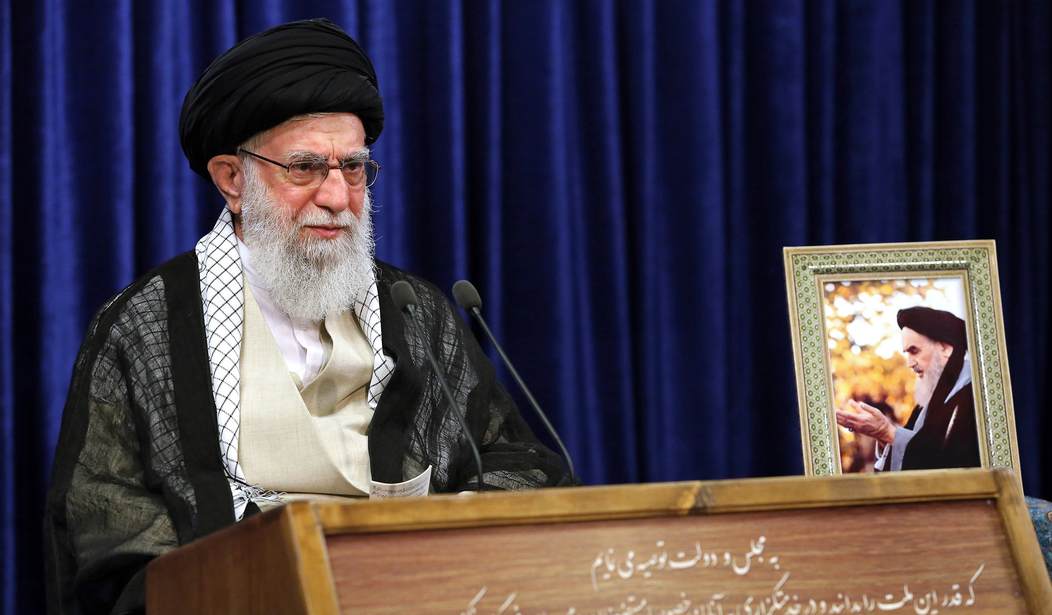The 1979 Iranian revolution was a repudiation of the Pahlavi dynasty’s self-serving economic policies and brutal repression of dissent. It was never intended to establish a theocratic dictatorship in place of a secular one.
Most of the factions involved in that revolution, such as the National Council of Resistance of Iran (NCRI) and People’s Mojahedin Organization of Iran (PMOI/MEK), envisioned a democratic future for the country. But despite their support from the vast majority of Iranian citizens, they were not ultimately able to prevent Ruhollah Khomeini from co-opting the revolution to establish a system of absolute clerical rule, with himself at its head.
Now, Khomeini’s successor is overseeing efforts to stave off a renewed push for democratic governance by insisting that opposition to the theocratic dictatorship is tantamount to endorsement of the very monarchy that was rejected by virtually all Iranians more than four decades ago.
In July 2018, sensing that large-scale unrest was looming, the state-run newspaper Jomhuri Eslami
Recommended
Khastar’s statement came approximately 19 months after the first in an ongoing series of nationwide uprisings which revealed the depth of popular support for regime change in Tehran. At the end of 2017, a protest began in the city of Mashhad over the state of the Iranian economy, then began spreading rapidly while also taking on an increasingly political tone. By early January 2018, the movement encompassed well over 100 cities and towns, with each of them providing an outlet for unusually provocative slogans including “death to the dictator”. At the height of that uprising, Khamenei delivered a speech which acknowledged that the MEK had played a leading role in promoting those slogans and facilitating the constituent protests.
Fear of such organized Resistance motivated the regime to meet the next major uprising, in with repression greater than anything the country had seen since the 1980s, when the system was still struggling to solidify its power structure. With protests erupting spontaneously in nearly 200 localities in November 2019, authorities opened fire on crowds of protesters, killing more than 1,500 before initiating a campaign of systematic torture that was later detailed in an Amnesty International report title “Trampling Humanity”.
In the period between the two uprisings, Tehran also set its sights directly on the organized resistance. In June 2018, an Iranian diplomat acting on orders from the regime’s Supreme National Security Council provided two Iranian-Belgian operatives with a powerful explosive device and directed them to detonate it as near as possible to the stage where Maryam Rajavi, the NCRI’s designated leader for a future transitional government, would be speaking to a gathering of roughly 100,000 Iranian expatriates near Paris.
The 2018 bomb plot was thwarted by European law enforcement, but it went a long way toward revealing the depth of Tehran’s concern about the organized opposition. In the ensuing four years, however, the regime has sought to downplay that concern in public, while also doubling down on its prior strategy of portraying anti-government protests as having a sentiment toward instead of being driven by the “Resistance Units”, affiliated with the MEK. Toward that end, government-linked social media accounts have been found to post manipulated videos of recent demonstrations, with dubbed audio featuring the very slogans the MOIS had instructed its agents to promote after infiltrating crowds of protesters. In most cases, the deception has been promptly exposed, often by the same activists who were present in the actual protests. Indeed, many of those protests clearly feature slogans that condemn the Shah right alongside the current clerical leadership.“Down with tyranny, be it the mullahs’ or the Shah’s” has proven to be a common chant in recent years’ nationwide uprisings, which number at least nine.
Several of those uprisings emerged even after the regime’s mass killing in November 2019, one of them only two months afterward. Today, with the public reeling from social crises including food price increases of as much as 1,200 percent, the patterns of public unrest are arguably more unmistakable than ever.
If the international community pays due attention to that pattern, it will no doubt recognize that the geographically and demographically diverse participants are all calling for freedom and democracy. Tehran would have its adversaries believe that the only likely outcome of regime change is either a return to monarchy or devolution into factional feuding.
But the reality is that there is a viable alternative calling for fair elections, secular governance, and safeguards on the rights of all citizens. Iran’s solution is looking forward not backward and Iranians are the first who have realized this reality.



















Join the conversation as a VIP Member